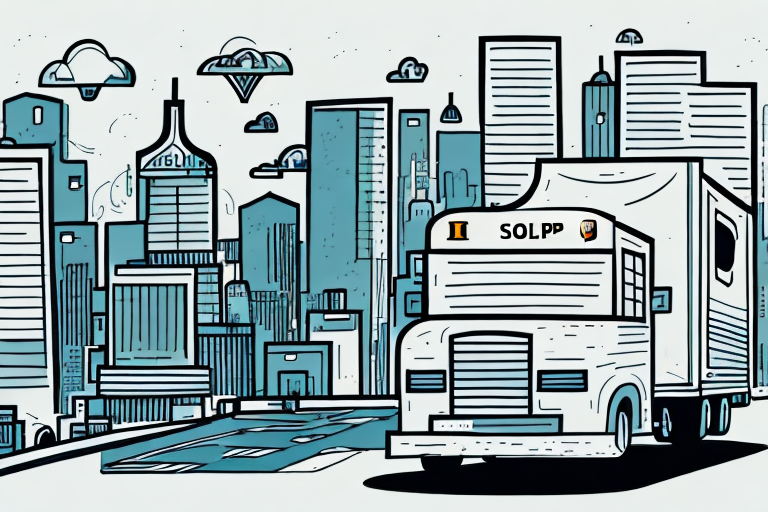Understanding UPS EAM Shipping Rates
UPS EAM Shipping Rates are a critical component for businesses shipping packages through UPS. This comprehensive guide delves into UPS EAM Shipping Rates, exploring their impact on your shipping strategies and costs.
What are UPS EAM Shipping Rates and Why Do They Matter?
UPS EAM stands for Enterprise Account Management, a service tailored for larger customers with significant shipping volumes. UPS EAM Shipping Rates are customized pricing agreements negotiated based on a company's shipping history, volume, and specific needs.
These rates matter because they can lead to substantial savings for businesses. Typically, UPS EAM rates are lower than standard rates, offering an attractive option for cost-conscious businesses. Understanding how these rates are calculated and the factors influencing them is essential for optimizing your shipping expenses.
Factors influencing UPS EAM Shipping Rates include:
- Destination: Rates vary based on the distance and availability of UPS services in the target area.
- Package Weight and Size: Heavier and larger packages generally incur higher shipping costs.
- Shipping Volume: Higher shipping volumes can lead to better-negotiated rates.
Collaborating closely with UPS to negotiate rates tailored to your business patterns can maximize savings and efficiency.
How to Calculate UPS EAM Shipping Rates – A Step-by-Step Guide
Calculating UPS EAM Shipping Rates involves a multi-step process designed to align with each business's unique shipping requirements:
- Establish a UPS EAM Account: Initiate the process by setting up a UPS EAM account to access specialized shipping rates.
- Provide Shipping Data: Submit detailed information about your shipping history and volume to enable UPS to create a customized rate plan.
- Negotiate Rates: Engage with UPS representatives to discuss and agree upon the most favorable rates based on your data.
- Access and Utilize Rates: Once finalized, your negotiated rates become accessible through your UPS EAM account, allowing you to start shipping under these new terms.
Keep in mind that UPS EAM Shipping Rates are dynamic and can fluctuate based on factors like fuel prices and seasonal demand. Regularly reviewing and renegotiating rates ensures ongoing cost-effectiveness.
Factors That Influence UPS EAM Shipping Rates
Numerous elements can affect your UPS EAM Shipping Rates, including:
- Shipping Volume: Increased shipping volumes can leverage better rates.
- Package Weight and Size: Larger and heavier packages typically cost more to ship.
- Destination: Shipping to distant or less serviced areas may incur higher rates.
- Mode of Transportation: Choices between air, ground, or sea transport impact pricing.
- Seasonal Demand: Peak seasons, like holidays, can drive up shipping costs.
- Special Handling Requirements: Items requiring special handling, such as fragile or hazardous materials, may increase rates.
Additionally, the nature of the product being shipped plays a role. Fragile or high-value items may require extra care and insurance, raising the overall shipping cost. Industries with specific needs, such as healthcare with temperature-controlled shipping, should factor these requirements into their rate negotiations.
For more detailed information, refer to UPS's official guidelines on UPS EAM Services.
How to Negotiate Better UPS EAM Shipping Rates for Your Business
Securing optimal UPS EAM Shipping Rates involves strategic negotiation. Consider the following approaches:
- Provide Comprehensive Shipping Data: Detailed and accurate shipping information enhances your bargaining power.
- Commit Long-Term: Demonstrating a commitment to a long-term partnership can incentivize UPS to offer more favorable rates.
- Explore Various Transportation Modes: Assess different shipping methods to identify the most cost-effective options.
Leveraging your shipping volume is crucial. Businesses with large shipment volumes often have more negotiating leverage to secure better rates. Additionally, staying informed about UPS's pricing structures and promotional offers can present opportunities for temporary discounts or special deals.
For further strategies, consult resources from industry experts such as the U.S. Department of Transportation.
Common Mistakes to Avoid When Shipping with UPS EAM
To maximize the benefits of UPS EAM Shipping Rates, avoid these common pitfalls:
- Not Negotiating Rates: Accepting standard rates without negotiation can lead to unnecessary expenses.
- Procrastinating Shipments: Delayed shipping can result in higher rates and potential delivery delays.
- Ignoring Package Optimization: Failing to optimize package weight and size increases shipping costs.
- Overlooking Surcharges: Additional fees like fuel or residential delivery charges can escalate total costs.
Another frequent mistake is inadequate package tracking. Utilizing UPS's robust tracking tools, such as UPS Tracking, ensures packages are monitored throughout their journey, mitigating the risk of loss or delays.
Tips for Optimizing Your Shipping Strategy with UPS EAM
Enhancing your shipping strategy with UPS EAM can lead to cost reductions and improved efficiency. Implement these strategies:
- Prepare Packages in Advance: Proper labeling and packaging minimize errors and shipping delays.
- Select the Appropriate Transportation Mode: Analyze different shipping methods to find the most economical option that meets your delivery timelines.
- Utilize Tracking Technology: Leverage UPS's tracking features to monitor shipments and ensure timely delivery.
Additionally, take advantage of UPS's diverse packaging solutions. Using UPS-provided packaging can reduce material costs and ensure packages are adequately protected during transit.
For more optimization techniques, visit the UPS Shipping Services page.
Understanding the Different Types of UPS EAM Shipping Rates – Which One Is Right for You?
UPS EAM Shipping Rates are categorized into several types, each suited to different business needs:
- Daily Rates: Fixed rates based on package weight and destination, ideal for consistent shipping volumes.
- Spot Rates: One-time negotiated rates for specific shipping requirements or irregular shipping periods.
- Customized Rates: Comprehensive rate plans developed through detailed negotiations, tailored for businesses with high and specific shipping demands.
Selection of the appropriate rate type depends on factors such as your shipping volume, frequency, and specific requirements. Businesses with steady, high-volume shipments benefit most from daily or customized rates, whereas those with sporadic shipping needs may find spot rates more advantageous.
Furthermore, the choice between shipping modes (air vs. ground) influences rate selection. For urgent shipments, air freight may be necessary despite higher costs, while ground shipping can be more economical for less time-sensitive packages.
Explore UPS’s rate options in detail on their Pricing Services page to determine the best fit for your business.
How to Track and Manage Your UPS EAM Shipments Effectively
Effective management of UPS EAM shipments hinges on robust tracking and organizational practices:
- Utilize UPS Tracking Tools: Monitor packages in real-time using UPS’s tracking technology to ensure timely delivery.
- Set Up Notifications: Configure alerts and notifications to stay informed about shipment status and potential delays.
- Maintain Accurate Records: Keep detailed records of shipments and shipping histories to streamline future negotiations and audits.
Proper packaging and labeling are also essential. Ensure that all shipping labels contain accurate information, including recipient details and any necessary handling instructions. This reduces the risk of delivery errors and minimizes additional costs.
Additionally, use UPS’s shipping calculators to estimate costs and manage your shipping budget effectively. Regularly reviewing your shipping expenses can help identify areas for further savings.
Frequently Asked Questions About UPS EAM Shipping Rates
Here are some common questions regarding UPS EAM Shipping Rates:
- What is the difference between UPS EAM Shipping Rates and regular UPS rates?
- UPS EAM Shipping Rates are customized agreements negotiated based on a company's shipping volume and history, typically offering lower rates compared to the standard UPS rates available to all customers.
- What are the benefits of UPS EAM Shipping Rates?
- Businesses with high shipping volumes can achieve significant cost savings and receive personalized service tailored to their specific shipping needs.
- How do I negotiate UPS EAM Shipping Rates?
- To negotiate, establish a UPS EAM account, provide comprehensive shipping data, collaborate with UPS to discuss terms, and finalize the rates through your account portal.
For more detailed inquiries, visit the UPS Sales Contact page.
In conclusion, understanding and leveraging UPS EAM Shipping Rates is vital for businesses aiming to optimize their shipping strategies and reduce costs. By following the guidelines and tips provided in this article, you can effectively manage your shipping needs and enhance your overall logistics efficiency.
Note that UPS EAM Shipping Rates are typically reserved for businesses that meet specific criteria, such as high shipping volumes and consistent patterns. If your business does not qualify, explore other UPS programs and discounts to find suitable cost-saving opportunities. Contact a UPS representative to discuss your options and determine the best shipping solutions for your business.








